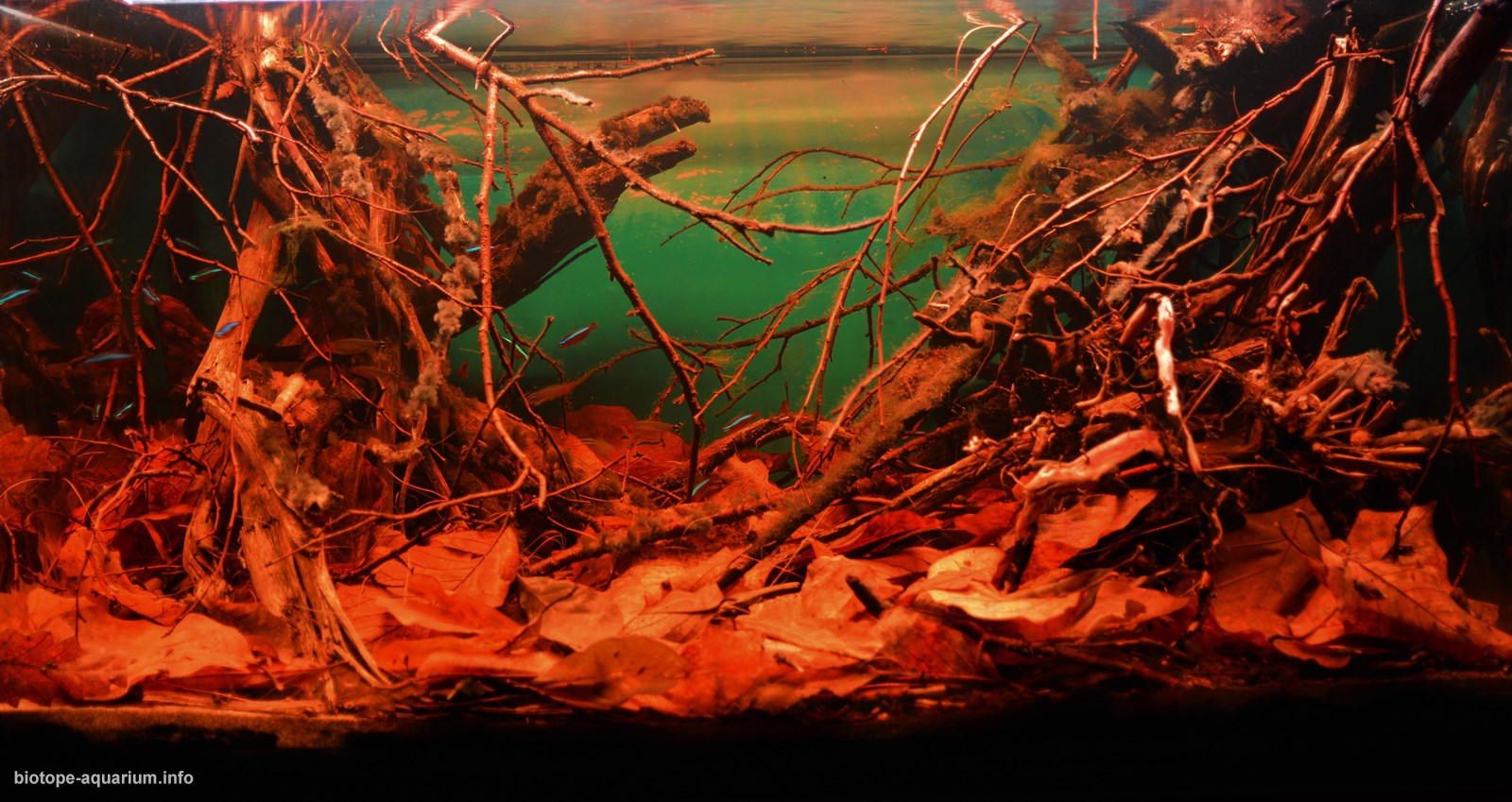Igarapé do Daracua, the small forest stream of Rio Negro River, near Barcelos, Brazil
_st place in Biotope Aquarium Design Contest 2022

Volume of your aquarium: 200 L
Dimensions of your aquarium: 90x50x45 cm
List of fishes: Paracheirodon Axelrodi, Hemigrammus bleheri
List of plants: N/A
Description of Decorations and Substrate: Sand with a granulation of 0,1-0,5 mm; Roots (the roots and branches I used are roots from various trees that were brought by the nearby river. They were washed and cleaned well.) I also used magnolia and oak leaves.
Description of Equipment: Filter Tetratec ex1200 l/h; Lamp Life Aqua Prime 900, Heater 300w
Water Parameters: PH 6, GH 4, kh 2
Additional Info: I change the water once a week, about 30%, without touching the substrate. I use osmosis water to ensure the balance of water parameters, there are plenty of dead wood and leaves in the aquarium; they can control well the fluctuation of the pH value.
Aquarium video::
Description of the Area Surrounding the Biotope: Rio Negro is the second largest river in South America with many river tributaries that eventually end up with smaller forest streams. One of these forest streams is Igarapé do Daracua in Brazil and is named after the village of Daracua, which is located near Barcelos.
Village Daracua is located in an inaccessible place in the depths of the Amazon rainforest, and it is easiest to get to it by boat.
Description of the Underwater Landscape of the Biotope: During the rainy season the water level rises and is poured into the surrounding forest. This is a time of abundance, because the fish migrate into the submerged forest where abundant food sources are found and the breeding begins. Forests represent a major source of plankton and other natural foods necessary for young fish, as well as for adult ones. Other than providing natural food for fish, forests provide them with the shelter from predators and create the shadow above water, thereby preventing overheating and even excessive drying during the dry season. The soil is sandy and with almost no mineral content. A large amount of leaf litter forms a dense carpet, along with the roots of the flooded forest and branches. Water carries a large amount of detritus. Detritus contains decomposing organic matter, including animal remains, plant residues.
Description of the Habitat Parameters: During the rainy season (starts in September and ends in May) the water is considerably colder and temperature is about 23 °C, water pH is about 6ph. During the dry season (starts around 29th of May and ends in September), the water level is reduced and warmer, the temperature of water is around 28-30°C. Due to the low water level and the large number of leaves and branches, the water contains a large concentration of tannins, which adds a dark color like “Tea color” and the water pH is low, about 3-4ph.
List of Fishes and Invertebrates Occurring in the Nature Biotope: Crenuchus spilurus, Nanostomus eques, Poecilocharax weitzmani, Liosomadoras oncinus, Dicrossus filamentosus, Crenicichla notophthalmus, Mesonauta festivus, Acarichthys heckelii, Crenicichla marmorata, Heros notatus.
List of Plants Found in the Nature Biotope: There are no aquatic plants found in the environment I have described, only some terrestrial plants submerged by the rainy season.
Threats to the Ecology of the Biotope: The Amazon rainforest, besides having a great impact on the biotope, has also an impact on the overall climate of the Earth. About 20% of Amazon is already deforested; Between 1985 and 2015, Brazil lost almost 70 million hectares of native vegetation.
Sources of Information:
https://texasclimatenews.org/2019/05/17/the-amazon-forest-crucial-for-earths-climate-but-facing-new-threats/





